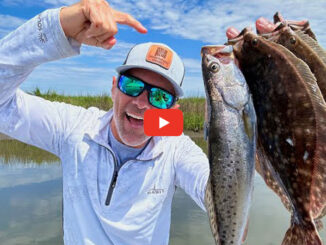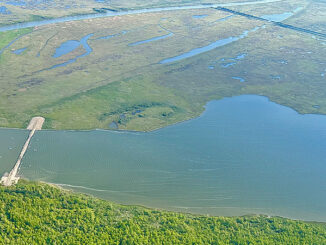
Anglers must develop skills to key on catching bigger speckled trout
Unless you live under a rock, you know that the first change to the recreational limit on speckled trout in 30 years was enacted on Nov. 20, 2023 for all Louisiana waters. And it’s a big change.
The previous limit could be explained with only nine words and numbers. It was 25 trout over 12 inches per day per angler. This daily creel limit did not allow for morning limits and afternoon limits — just one limit a day.
The new limit is not so easy to explain.
There is a slot size of 13-20 inches long with one caveat, and a daily creel limit of 15 fish per angler. Back to the caveat on length — of the 15 total fish, two fish can be longer than 20 inches. The new limit will terminate (sunset) on Jan. 1, 2028, but it could be modified depending on how well the stock rebounds.
We could not have asked for a better time to begin the recovery of the speckled trout stock than November 2023.
Good timing
The Louisiana Wildlife and Fisheries Commission just passed the one mile coastal buffer zone for controversial menhaden fishing, and the crash in shrimp market prices on the coast has resulted in a huge abundance of shrimp in the inshore waters. Both of these occurrences, combined with the reduction in speckled trout mortality implemented by the more restrictive recreational limits, means that the conditions are perfect to rapidly increase the speckled trout biomass. Hopefully, fishermen will be pleased at how numerous and large our speckled trout will be in 2028.
So how can anglers successfully approach these new limits and key on big trout?
There have been many limits caught by weeding through school trout under flocks of seagulls, but in 2024 this will be much less productive. I will still check flocks because occasionally there are schools of sizable trout under birds. However, if after several fish I see that their size is 11 and 12 inches, I will move on instead of trying to weed through the small ones so as not to unnecessarily increase the mortality of these smaller fish.
New techniques
Catching a 15-fish limit of 13-20 inch trout will not necessarily require a complete revamp of your fishing techniques. There will still be schools of 13-16 inch fish situating themselves in tidal currents downstream of drains, pinch points, and structure.
However, you could use this trout recovery period to add some new techniques to your arsenal. After all, you may need them to catch the huge trout we will hopefully have by 2028.
If you do not fish topwater baits, I suggest that you start with that technique. Walking a topwater bait in the morning and evening is the most likely method to consistently catch those 16-20 inch trout. Topwater baits are generally most effective in water shallower than six foot and can be fished along marsh shorelines, rocky banks, over oyster beds, and on grass flats.
Top artificial lures
Larger trout also eat shrimp, but as they mature their diet shifts toward a greater intake of mullet, menhaden, and croakers. The mullet and croakers often live around structure such as rock shorelines, reefs, and rigs, so consequently we find greater numbers of 16-20 inch long trout in the same locations. Artificial lures such as X-Raps and Mirrodines work exceptionally well at eliciting strikes from large trout when cast to rocky shorelines and retrieved back.

Trout on deep structures such as bridges, rigs, and submerged rock are effectively caught with a proficiency in jigging swim-baits. If you have not mastered jigging yet, this is a good time to learn, but there are also several easier artificial bait methods which can be used to achieve the same results in deep water. These include Carolina rigged swim-baits, drop shots, and vibing lures such as the Nomad Design Vertrex Max 95 Vibe.
Looking ahead
I am excited about the positive results we are sure to see by 2025 if we embrace the new speckled trout limits and make adjustments to avoid killing as few undersized trout as possible.
The Louisiana Department of Wildlife and Fisheries has a helpful video about the best handling practices for speckled trout below.
Together we can make this a successful recovery period and gain some helpful skills in the process.


